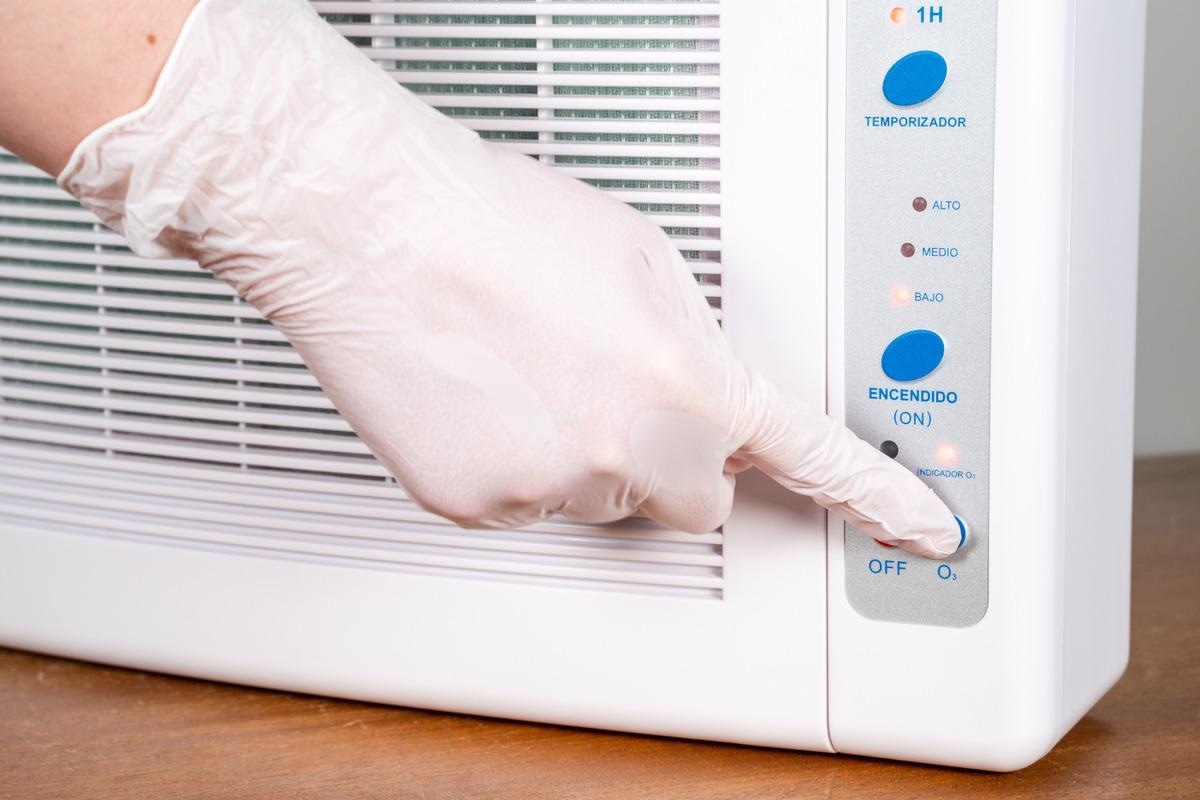In a recent study posted to the medRxiv* preprint server, researchers of Wales coronavirus disease 2019 Evidence Centre (WC19EC) conducted a rapid systematic literature review to assess the safety, effectiveness, and efficacy of severe acute respiratory syndrome coronavirus disease 2 (SARS-CoV-2) disinfection methods, including the ozone devices, in schools.

Background
There is a risk of SARS-CoV-2 infection to individuals from contaminated surfaces if enough viable viruses reach the host's mucous membrane from the surface. However, maintaining hand hygiene, routine disinfection, and cleaning help diminish the chances of SARS-CoV-2 infection associated with contaminated surfaces. Further, following a SARS-CoV-2 outbreak, additional cleaning measures are also advised to limit further risks in real-world settings such as educational premises.
Various non-touch disinfection technologies such as ozone devices, hydrogen peroxide, and light-based techniques for surface cleaning have been explored as a solution to prevent SAR-CoV-2's spread in educational settings. However, sufficient proof regarding the safety, effectiveness, and efficacy of these cleaning technologies against SARS-CoV-2 in real-world settings, like schools, is not available.
About the study
In the present rapid evidence summary, the scientists conducted a systematic literature review on September 2021 for two weeks to determine the:
1) surface survival of SARS-CoV-2,
2) the effectiveness and efficacy of SARS-CoV-2 cleaning technologies, focusing mainly on ozone machines but also others such as hydrogen peroxide vapor and light-based technologies, and
3) harms and benefits associated with these SARS-CoV-2 cleaning technologies, including health consequences.
The team specifically aimed to understand the potential health impacts of the currently used SARS-CoV-2 disinfecting technologies in educational settings for young people and children. A total of 82 studies providing primary, secondary, and tertiary evidence was included in the present literature review, with most of them published during 2020 and 2021. Nevertheless, studies providing indirect evidence dating from 2006 were also included.
Findings
The results imply that SARS-CoV-2 fragments can remain on the surfaces for around seven days in the communities, yet data regarding their viability was not available. According to the real-world transmission factors and surface survival data, the chance of surface transmission after a SARS-CoV-2 patient has been in an indoor space was modest following 72 hours, regardless of the last cleaning.
Although there was a scarcity of direct proof studying the effect of ozone cleaning procedures on SARS-CoV-2 in real-world settings, especially in schools, prior findings show that gaseous ozone can inactivate several bacteria and viruses, including SARS-CoV-2 in experimental settings. Apart from ozone devices, hydrogen peroxide and light-based technologies also inactivated SARS-CoV-2 in the experimental conditions.
There was insufficient data regarding the strategies for ensuring ozone removal following the disinfection, monitoring of occupational exposure, and training requirements for staff.
Additionally, since ozone has an immensely reactive oxidizing capacity, its excessive amounts can damage building materials and lead to health problems, mainly respiratory issues, through by-product generation or direct exposure. The health problems associated with short-term ozone exposure can occur even at extremely low concentrations, and children with asthma were particularly vulnerable. Other health effects linked to ozone exposure include reproductive, cardiovascular, and nervous system issues and death.
Further, the rooms must be sealed while disinfecting using ozone devices to prevent ozone gas leakage, which can be toxic at high doses. There is also a chance of ozone reacting with organic pollutants present in the room and producing secondary pollutants, like formaldehyde.
As a result, the use of ozone cleaning methods in real-world situations, like schools, was not recommended by prominent environmental health organizations such as the United States Environmental Protection Agency (US EPA) and the United Kingdom Scientific Advisory Group for Emergencies Environmental Modelling Group (UK SAGE EMG).
Conclusions
The study findings infer that there was no direct proof for the safety and effectiveness of using ozone devices to inactivate SARS-CoV-2 in real-world educational settings for young people, children, and staff. In contrast, there was evidence for risks of potential harm to young people and children from ozone or its secondary pollutants originating from the ozone devices, both in controlled and uncontrolled usage in educational settings.
Hence, the study indicates the significance of evaluating other interventions like gaseous chlorine dioxide for disinfection and curbing SARS-CoV-2 transmission, thereby minimizing the interruption to schooling during the ongoing coronavirus disease 2019 (COVID-19) pandemic.
In addition, the authors suggest the need for a rapid review of the effectiveness and efficacy of ozone devices in decontaminating indoor settings in the future as the only systematic review conducted on the topic was aimed at the decontamination of the sealed chamber using ozone.
*Important notice
medRxiv publishes preliminary scientific reports that are not peer-reviewed and, therefore, should not be regarded as conclusive, guide clinical practice/health-related behavior, or treated as established information.
-
Edwards, D. et al. (2022) "The efficacy, effectiveness and safety of SARS-CoV-2 disinfection methods (including ozone machines) in educational settings for children and young people". medRxiv. doi: 10.1101/2022.02.21.22271281. https://www.medrxiv.org/content/10.1101/2022.02.21.22271281v1
Posted in: Medical Science News | Medical Research News | Disease/Infection News
Tags: Asthma, Bacteria, Children, Coronavirus, Coronavirus Disease COVID-19, covid-19, Decontamination, Disinfection, Efficacy, Formaldehyde, Hydrogen Peroxide, Hygiene, Membrane, Nervous System, Ozone, Pandemic, Respiratory, SARS, SARS-CoV-2, Severe Acute Respiratory, Severe Acute Respiratory Syndrome, Syndrome

Written by
Shanet Susan Alex
Shanet Susan Alex, a medical writer, based in Kerala, India, is a Doctor of Pharmacy graduate from Kerala University of Health Sciences. Her academic background is in clinical pharmacy and research, and she is passionate about medical writing. Shanet has published papers in the International Journal of Medical Science and Current Research (IJMSCR), the International Journal of Pharmacy (IJP), and the International Journal of Medical Science and Applied Research (IJMSAR). Apart from work, she enjoys listening to music and watching movies.
Source: Read Full Article
